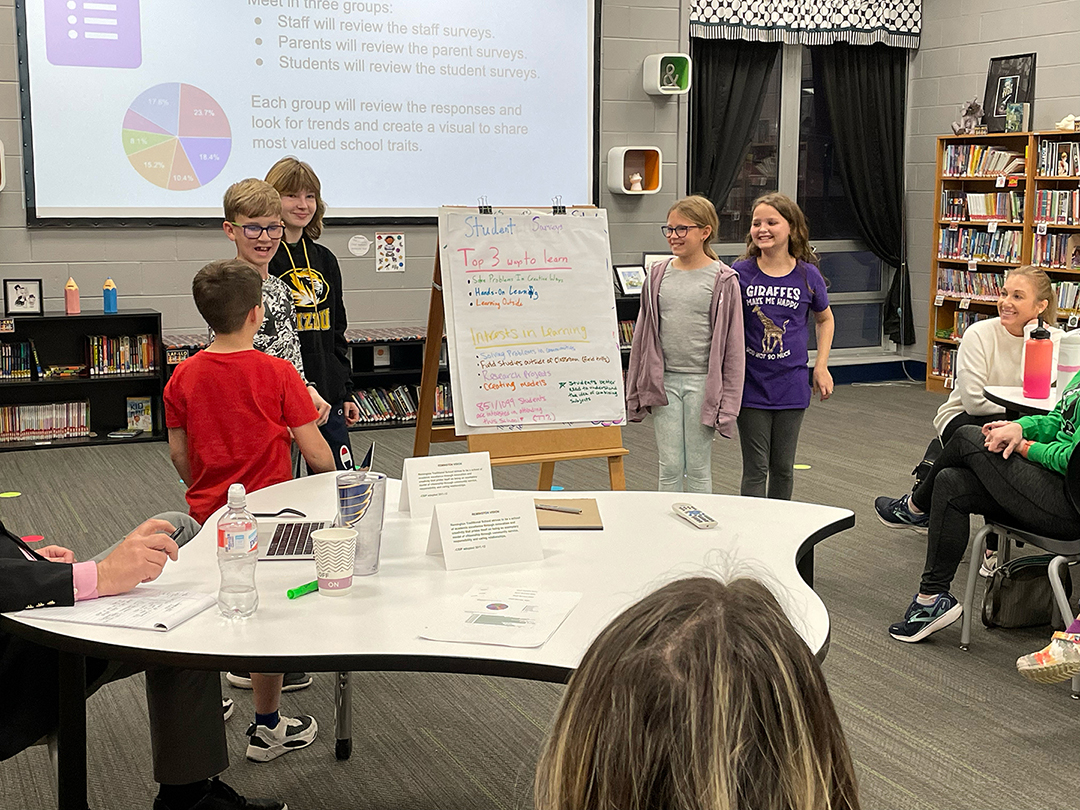 On June 13, the Pattonville Board of Education heard an update on changes planned for Remington Traditional School. Part of Remington’s Comprehensive School Improvement Plan (CSIP) work this year was researching and reviewing possible learning models to implement. The committee met six times throughout the school year. The first few meetings centered on researching and reviewing different learning models and the second phase focused on community engagement. The chosen learning model will be one created by students, families and staff and unique to Remington.
On June 13, the Pattonville Board of Education heard an update on changes planned for Remington Traditional School. Part of Remington’s Comprehensive School Improvement Plan (CSIP) work this year was researching and reviewing possible learning models to implement. The committee met six times throughout the school year. The first few meetings centered on researching and reviewing different learning models and the second phase focused on community engagement. The chosen learning model will be one created by students, families and staff and unique to Remington.
While achievement at Remington is high, the leading factor for a change to the learning model stemmed from a decline in enrollment, specifically at the middle school level. Remington principal Dr. Don Furjes and members of the teaching and learning department saw this as an opportunity to review the focus of the school. To do so, they created a committee of students, families and staff to look at why students leave Remington before eighth grade and what learning models can help retain and attract families.
The committee originally looked at three potential learning models that would be sustainable for staff and the school overall:
- Arts integrated - Students demonstrate understanding through an art form;
- Experiential learning - Project-Based Learning (PBL), or learning by doing; and
- STEAM education - Using science, technology, engineering, arts and math to guide inquiry and problem solving.
Committee members investigated models by reviewing information and exploring schools currently using that model and ultimately decided whether each fit into Remington’s vision. Looking at the methods and advantages and disadvantages of each, the committee narrowed its focus to the experiential learning and STEAM education models.
The committee has pulled characteristics of both models to create a new model based on the characteristics of innovation, creativity, community service, responsibility and relationships. The committee also discussed how those areas would be incorporated into the learning model at all grade levels.
To gauge whether a model featuring these characteristics would be of interest and help grow enrollment, surveys were created and administered to students, parents and staff. The survey was sent to all kindergarten through seventh grade parents/guardians, third through seventh grade students and all certified teachers in the district. Of the responses received, results indicated support for a new learning model focused on those five characteristics, with 77% of students indicating they would like to attend a school like this, 95% of parents interested in their child attending a school like this and 85% of staff — including 100% of Remington staff — indicated they would like to teach at this type of school.
The committee chose not to select one of the existing learning models but create a model combining aspects of both to establish a design-thinking model, where students learn through a variety of ways, including field studies and hands-on learning. Additionally, the original plan was to focus on grades 6-8 but, based on survey data, expanded school wide.
“Our opportunity to expand our school's learning potential has been both invigorating and exciting,” Furjes said. “Students, parents, staff and the teaching and learning department joined efforts and made certain that a learner centered approach would be a part of the final recommendation. The new design-thinking learning model will serve as the beacon for our school as we were able to match Remington’s vision and mission to this personalized approach towards education. The entire process from start to finish has been a community effort."
Throughout the 2023-2024 school year, all certified staff at Remington will receive regular professional development related to launching the new learning model. During that time, more focused, detailed design work will take place to stimulate discussion and what learning will look like at Remington. The committee will also meet monthly next school year to get updates and provide additional feedback. The learning model will also impact construction work at Remington as part of Prop S, Pattonville’s $111 million no-tax-rate-increase bond issue.
Because the learning model is a transition from that of a traditional school, the committee also brainstormed ideas for possible new names for Remington. They narrowed their suggestions to the Academy of Innovation at Remington and Remington Exploration Academy. Board policy FF (Naming Facilities) indicates that facility names may be changed when a specific program or theme the facility was named for changes or when the current name no longer supports the objective of the facility. Those names are presented to the superintendent, who can then make a recommendation to the board, who ultimately decides to approve a building’s name change. Opened in 1955 as Remington Elementary School, the school became a K-8 school and choice and was renamed Remington Traditional School in 1982.
Find out more
See the presentation to the board.